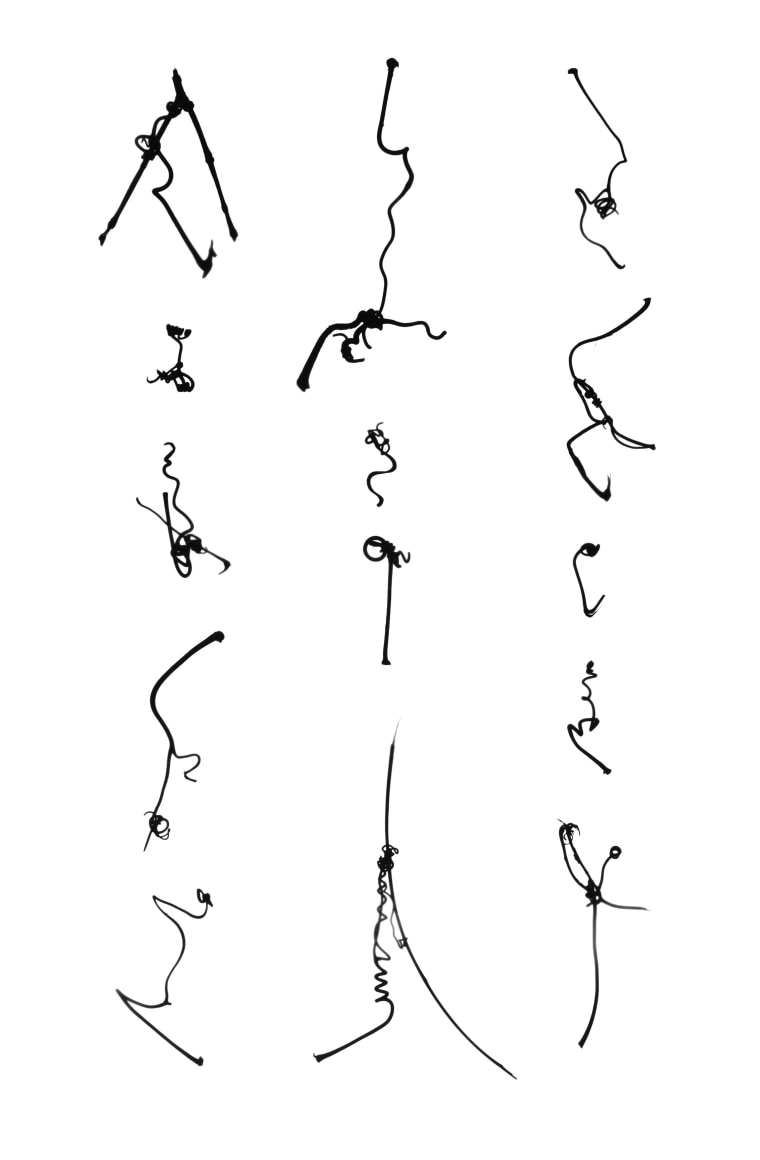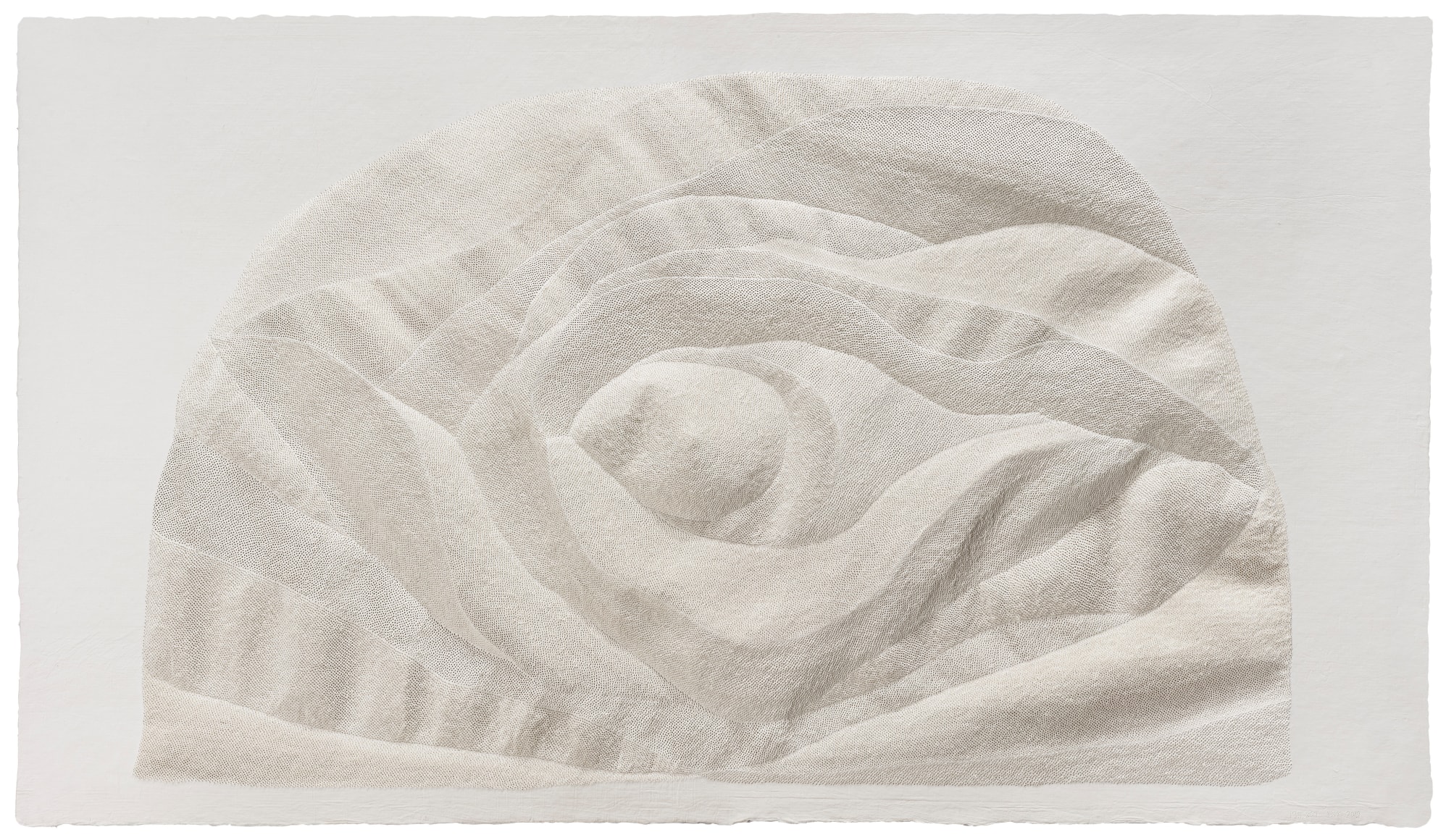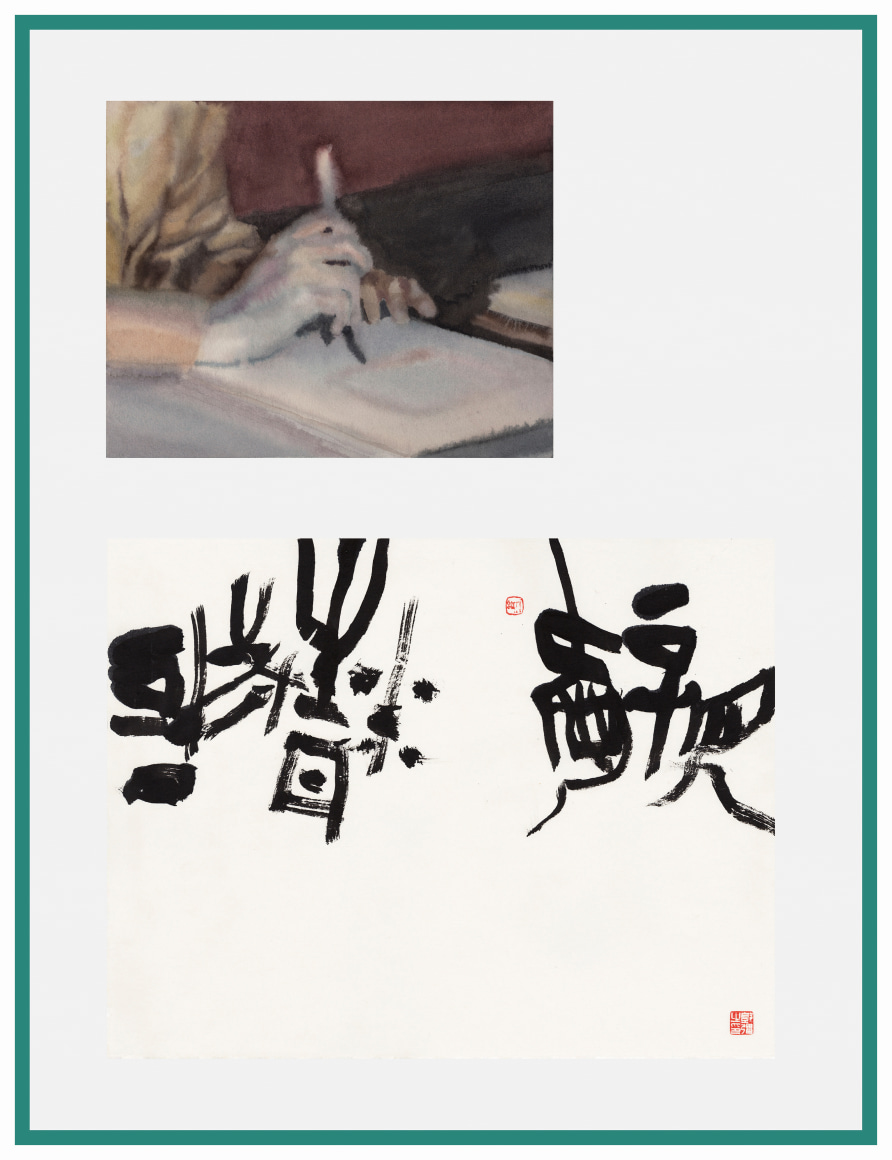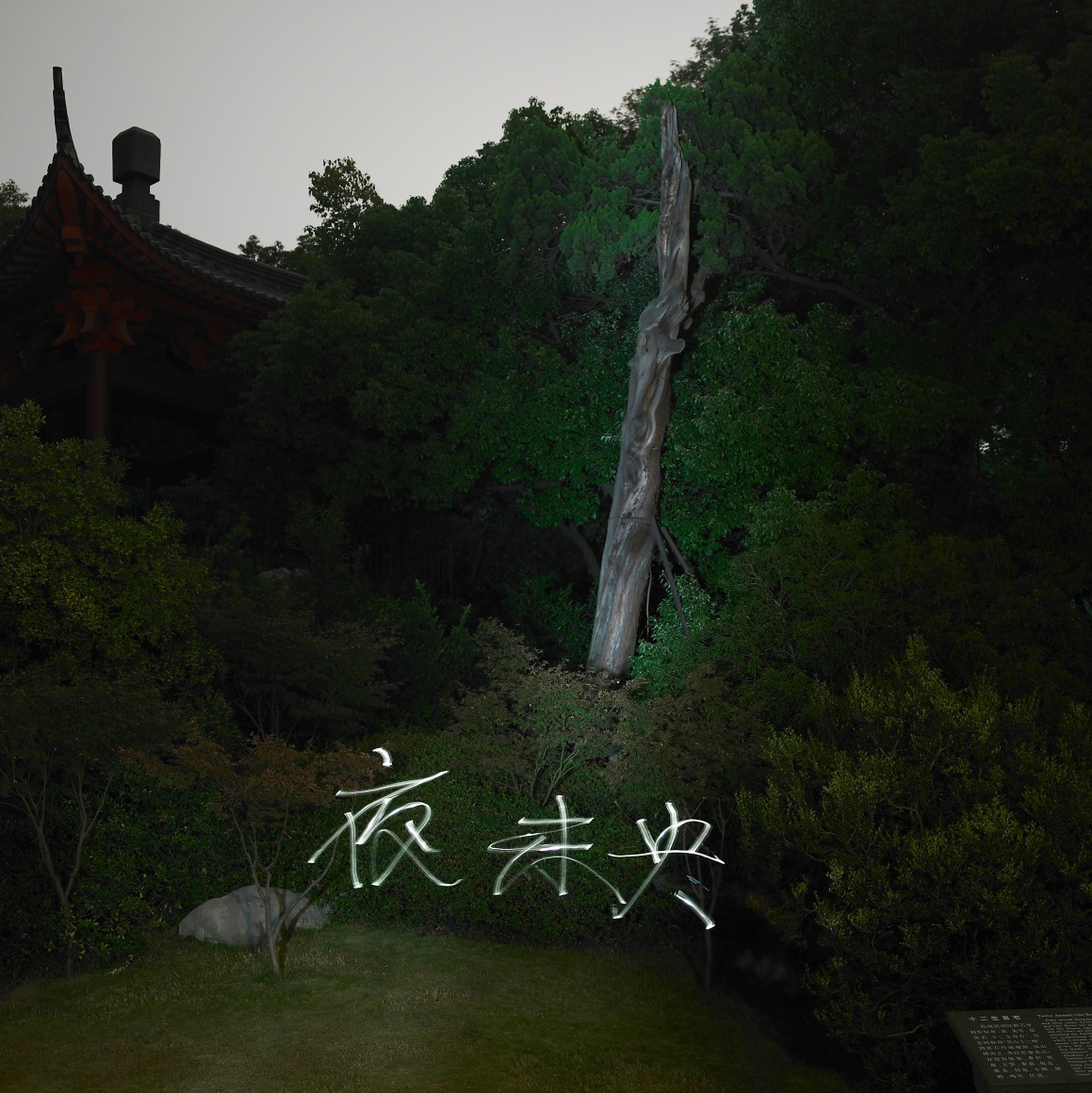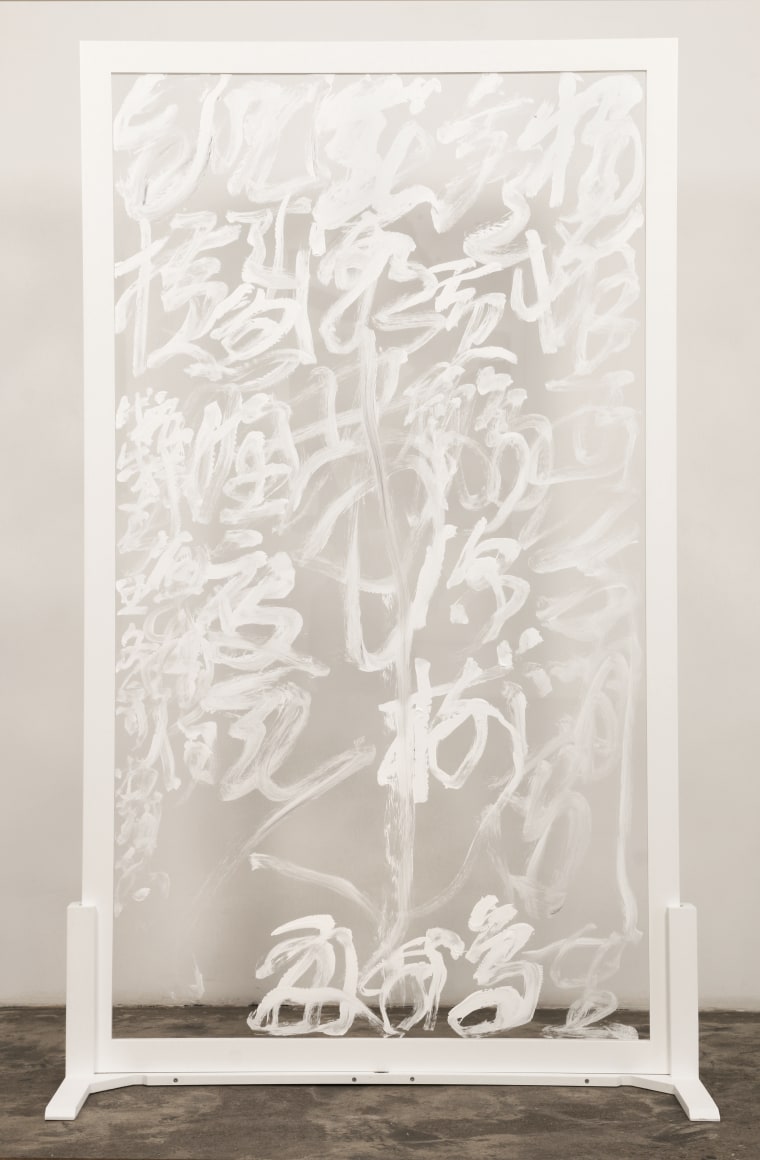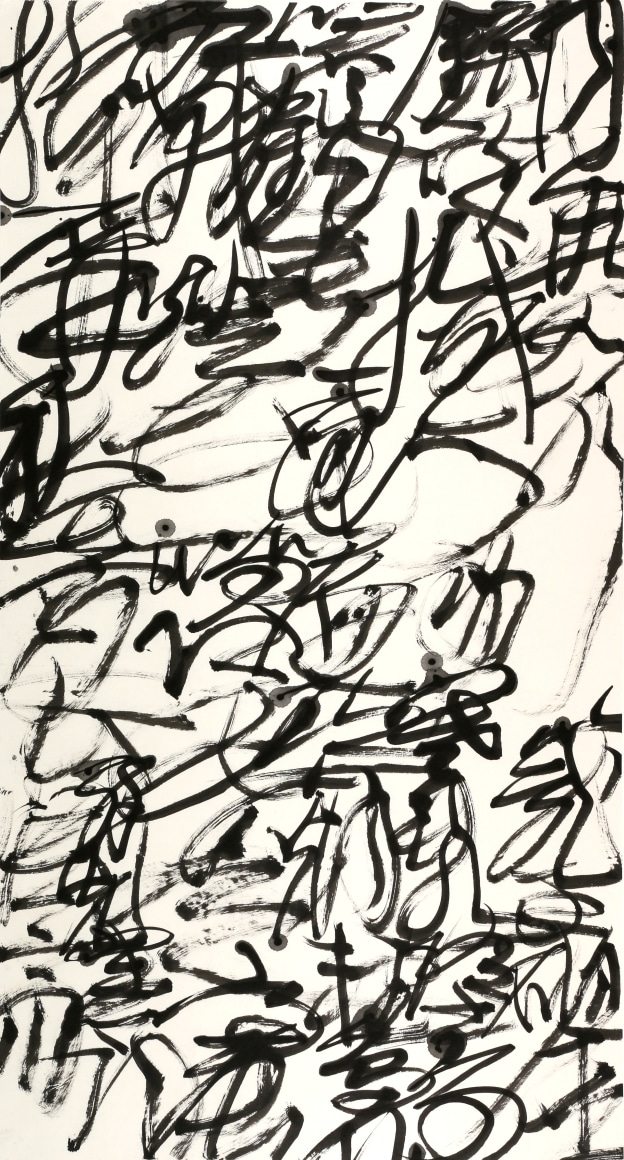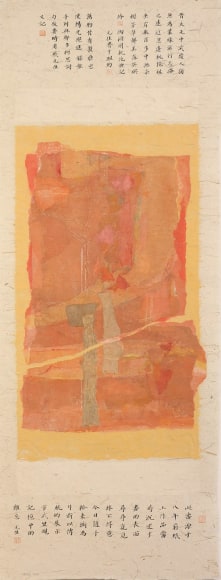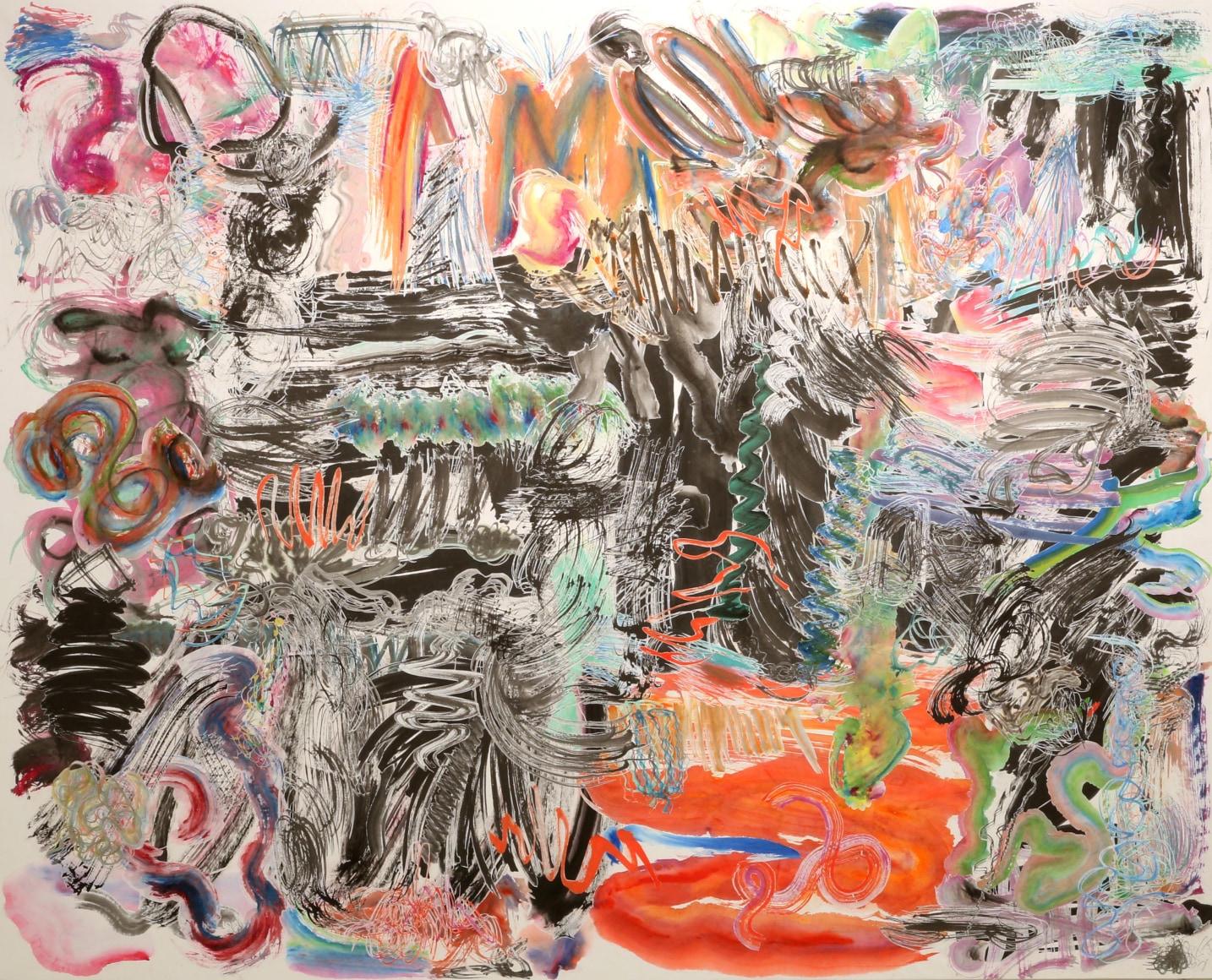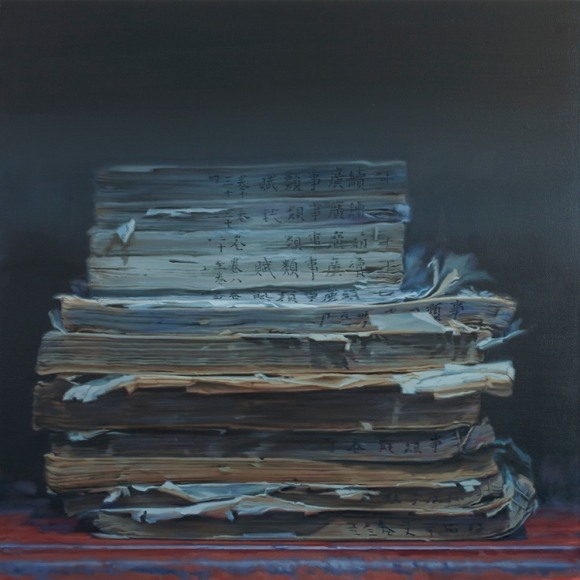For Asia Week, Chambers Fine Art is pleased to present a selection of artworks that take their inspiration from the calligraphic tradition of China. The exhibition features the work of eight artists, each of them deeply familiar with the tradition of writing with brush and ink, and yet influenced by it in a wholly unique manner.
Perhaps the most celebrated and important calligrapher alive today, Wang Dongling is known for his highly personal style of writing called luanshu (chaos script), an expressive method of calligraphy that is so fluid that it becomes pure abstraction. He bases each of his calligraphic works on an ancient poem or text, and yet is more interested in illustrating the emotion of the lyrics than the legibility of the characters. Similarly, the ‘characters’ of Cui Fei’s Manuscript of Nature series is not meant to be read – although in her case they are completely abstract, appearing in the form of grape vine tendrils that she gathers herself. The tendrils are clipped and arranged in such a way that they are evocative of Chinese calligraphy.
Wei Jia is a highly accomplished calligrapher who similarly has embraced abstraction, although he explores it not through his writing, but rather through the use of collage. His methodical process of layering torn pieces of colored and stained Xuan paper is tied to his daily calligraphy practice, and he often notates his works once they are finished, providing context to the abstract forms. In complete contrast are the photo-realistic oil paintings by Xiaoze Xie, whose thematic focus is the preservation of human knowledge. In his Chinese Library series, he depicts rare and ancient texts in various states of conservation, stored in university libraries in China. Guo Hongwei also paints representational works, although he is best known for his mastery of watercolor. In 2019 he began a collaboration with his father, who wrote several well-known sayings by Chiang Kai-Shek, Mao Zedong, and others in highly stylized forms of calligraphy. For his part, Guo Hongwei rendered each authors’ hand as they were in the act of writing, rendered in his unique style of ‘isolated’ watercolor brushstrokes.
Qiu Zhijie is well known for fusing traditional Chinese calligraphy with modern media. In his "light writing" photographic series, he used an electric torch to write words in the night air that were captured by a digital camera on a prolonged exposure, and then digitally superimposed onto another photograph. The artist calls the process "calli-photo-graphy." In contrast, Fu Xiaotong and Wu Jian’an both focus on the traditional materials involved with calligraphy and ink painting, although with completely different results. In his 500 brushstrokes series, Wu Jian’an seamlessly combines the traditional materials of ink and xuan paper with paper-cut and collage techniques. Fu Xiaotong on the other hand does away with ink completely, and instead focuses on Xuan paper, piercing the paper with a needle to create landscapes and abstract forms based on nature.

